Croatia, officially known as the Republic of Croatia (Republika Hrvatska), is a captivating country nestled in the northwestern part of the Balkan Peninsula. For those wondering “Where Is Croatia?”, it occupies a strategically important and geographically diverse crescent shape in Europe. This Southeastern European nation boasts a rich history, stunning Adriatic coastline, and a unique blend of Central European and Mediterranean cultures. Its capital city, Zagreb, is situated in the northern part of the country, serving as a vibrant hub of Croatian life.
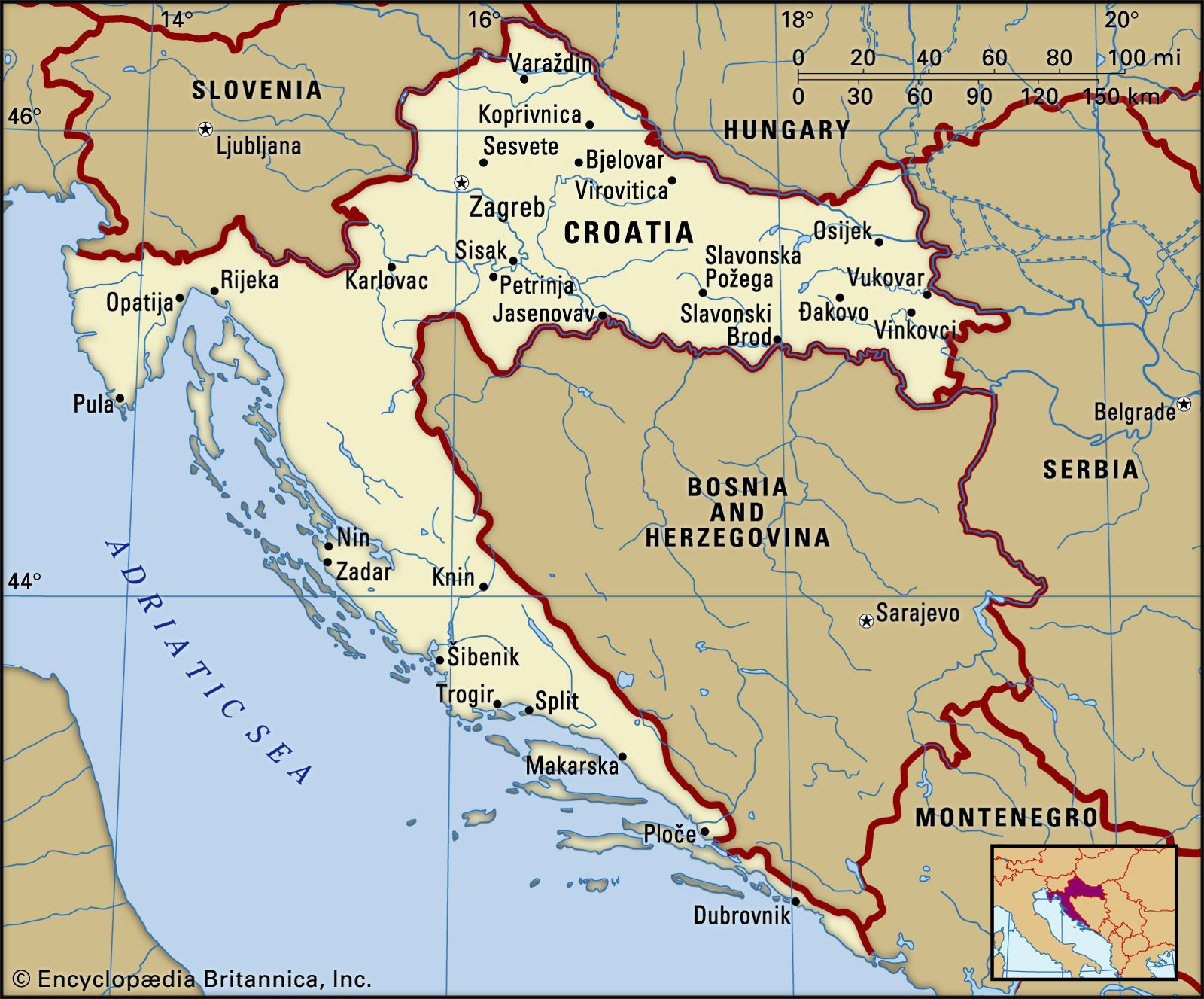 Croatia Diverse Geography Balkan Peninsula Europe
Croatia Diverse Geography Balkan Peninsula Europe
A Country of Regions: Exploring Croatia’s Geographical Makeup
To truly understand where Croatia is, it’s essential to delve into its regional components. Present-day Croatia is formed from historically significant Croatian regions: Croatia-Slavonia, Istria, and Dalmatia.
- Croatia-Slavonia: Located in the upper, arm-like section of the country, Slavonia is characterized by its fertile plains and agricultural heartland.
- Istria: This peninsula, jutting into the northern Adriatic coast, represents a distinct region with a strong Italian and Mediterranean influence. It is known for its picturesque coastal towns and rich cultural heritage.
- Dalmatia: Stretching along the Adriatic coast, Dalmatia forms the coastal strip of Croatia. Famous for its stunning islands, historic cities like Dubrovnik and Split, and crystal-clear waters, Dalmatia is a major tourist draw.
Despite being under various foreign rulers for centuries, these regions maintained a strong Western orientation in their culture. This is reflected in their legacy of Roman law, the Latin alphabet, and Western European political and economic systems. Croatia’s journey through the 20th century included being part of Yugoslavia, experiencing the challenges of its dissolution in the early 1990s, and finally achieving its European aspirations by joining the European Union in 2013 and adopting the Euro in 2023.
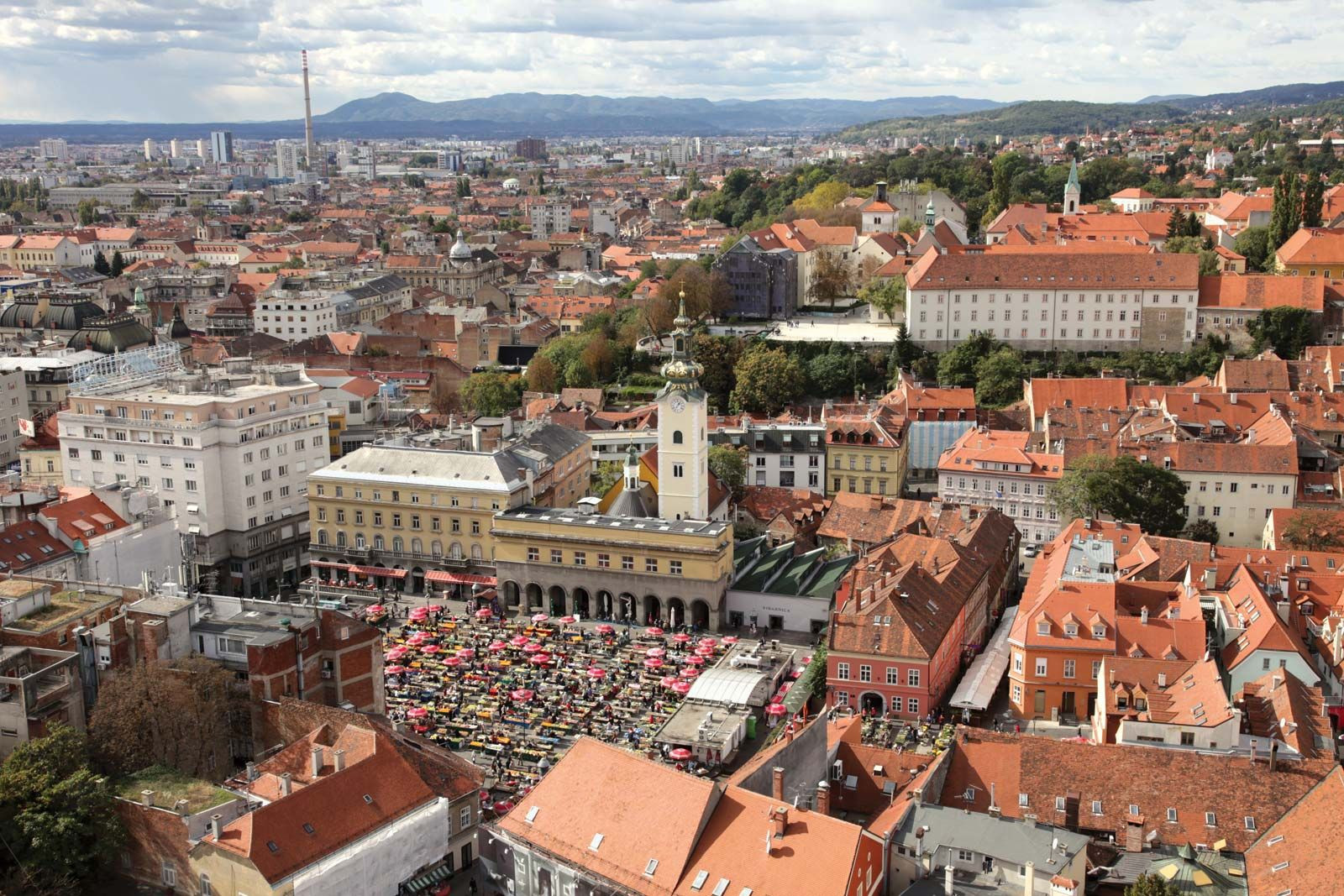 Zagreb Capital City of Croatia Location
Zagreb Capital City of Croatia Location
Locating Croatia on the Map: Borders and Neighbors
Geographically pinpointing “where is Croatia” involves understanding its borders and neighboring countries.
- Eastern Border: The upper arm of Croatia shares a border with the Vojvodina region of Serbia.
- Northern Borders: To the north, Croatia is bordered by Hungary and Slovenia.
- Southern Tip: The southern point of Croatia touches Montenegro.
- Bosnia and Herzegovina: Crucially, within the crescent shape of Croatia, a long border is shared with Bosnia and Herzegovina. Interestingly, Bosnia and Herzegovina has a narrow corridor that reaches the Adriatic Sea, effectively splitting a southern part of Croatia from the rest of the country.
- Adriatic Sea: The western edge of Croatia is defined by its extensive coastline along the Adriatic Sea, a crucial feature of its geography and appeal.
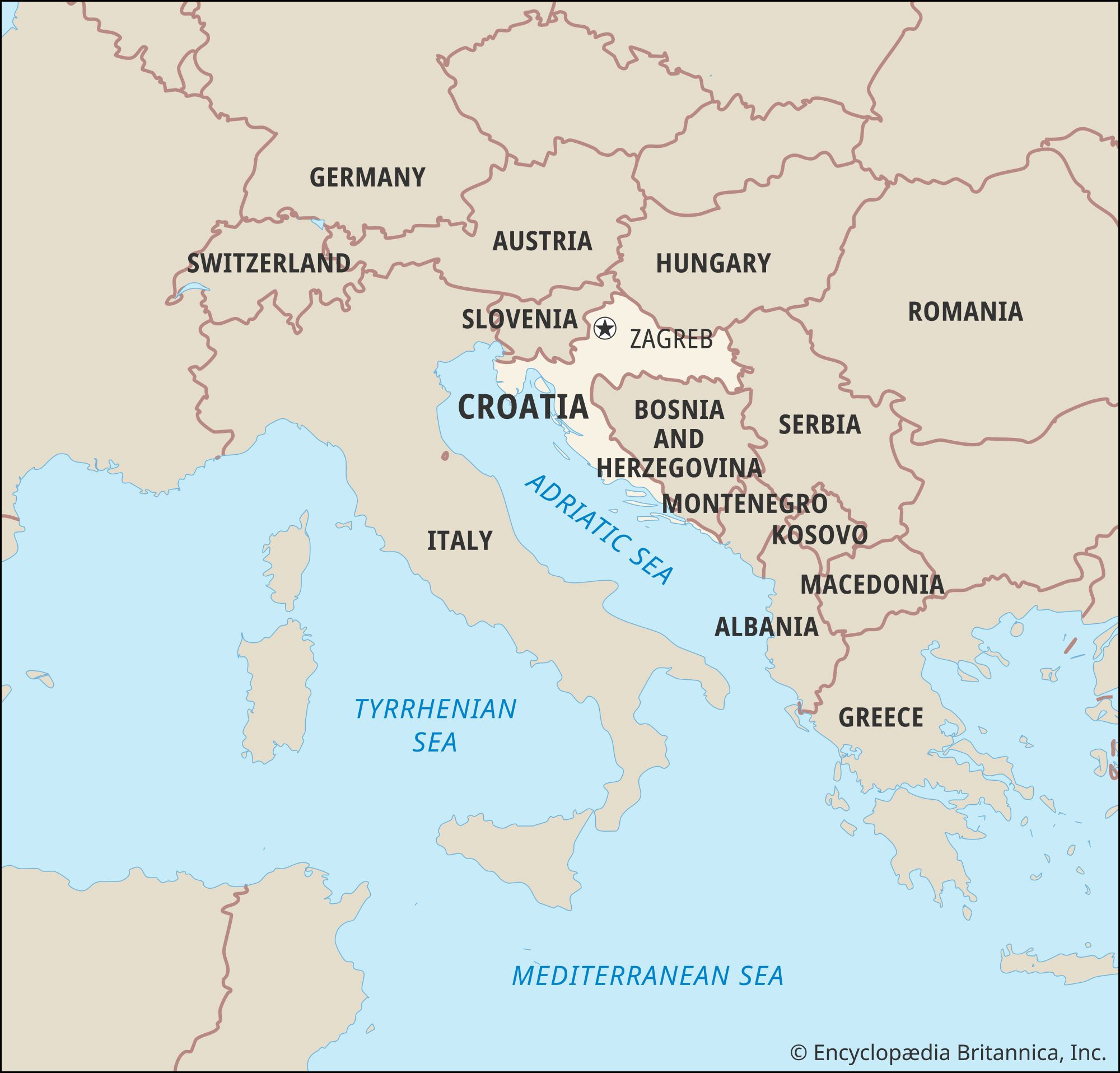 Croatia Locator Map Balkan Peninsula Europe
Croatia Locator Map Balkan Peninsula Europe
Diverse Landscapes: Relief and Regions within Croatia
Croatia’s geography is remarkably diverse, encompassing three main regions:
- Pannonian and Para-Pannonian Plains: Dominating the north and northeast, these plains stretch across the upper arm of Croatia. North of Zagreb, the Zagorje Hills, remnants of the Julian Alps, separate the Sava and Drava river valleys. This area is characterized by rolling hills, fertile land, and river systems.
- Central Mountain Belt (Dinaric Alps): Extending west and south from the Pannonian region towards the Adriatic coast, this mountainous belt is part of the Dinaric Alps. The karst plateaus here are composed mainly of limestone. Higher altitudes are barren, while lower areas are heavily forested. Dinara, Croatia’s highest peak at 6,007 feet (1,831 meters), is located within this range.
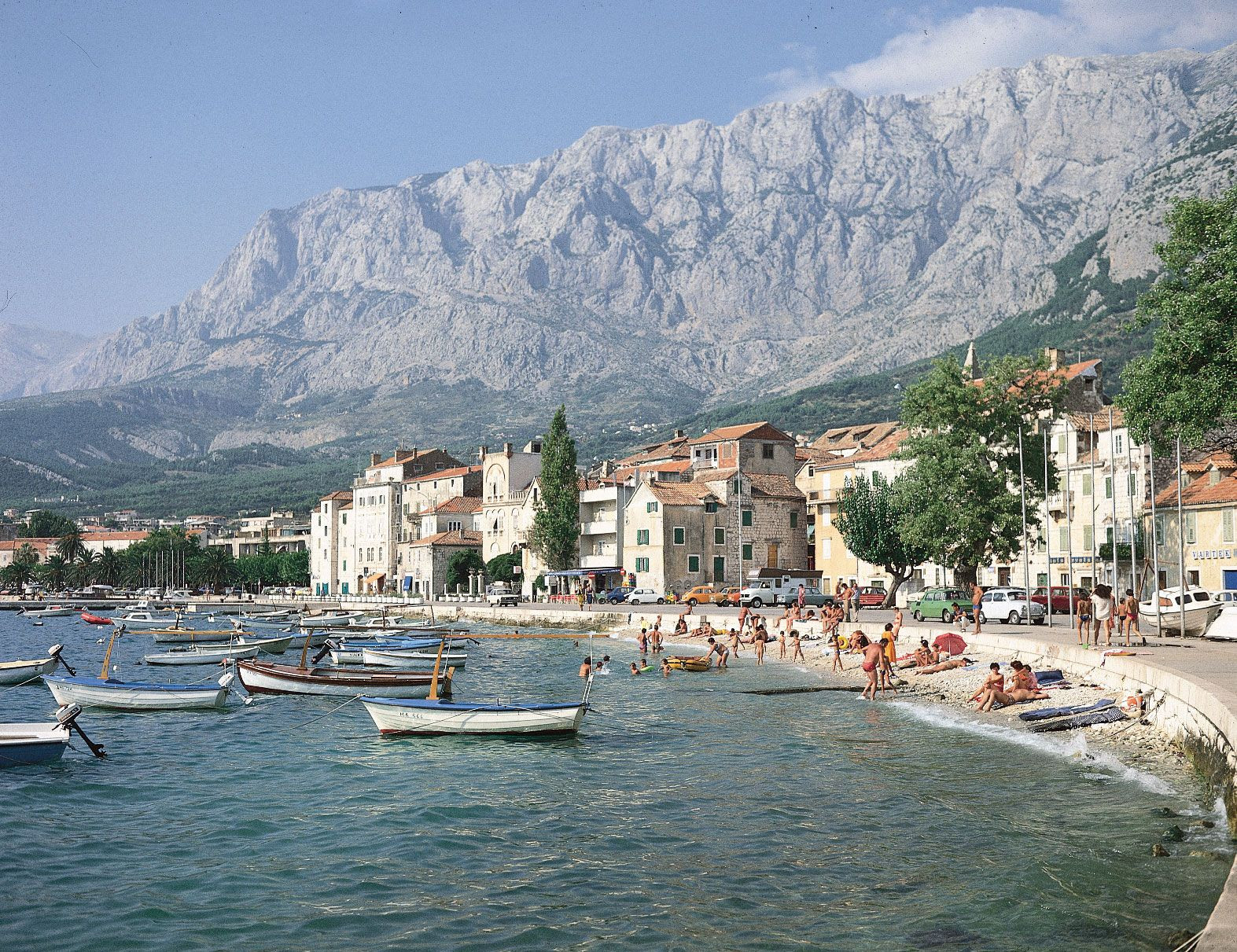 Dinaric Alps Croatia Mountain Range Coastline
Dinaric Alps Croatia Mountain Range Coastline
- Croatian Littoral: This coastal region includes the Istrian Peninsula in the north and the Dalmatian coast extending south to the Gulf of Kotor. Nestled between the Dinaric Alps and the Adriatic Sea, Croatia’s littoral boasts a stunning 1,100 miles (1,800 km) of coastline, adorned with over 1,100 islands and islets.
Waterways: Drainage and Rivers of Croatia
The rivers of Croatia play a significant role in its geography and economy. The Sava and Drava rivers are particularly important as they traverse the Pannonian and para-Pannonian plains and are largely navigable.
- Sava River: Originating in Slovenia, the Sava flows through Zagreb and forms a large part of the border between Croatia and Bosnia and Herzegovina.
- Drava River: Entering Croatia from Slovenia, the Drava creates most of the border with Hungary before joining the Danube.
- Danube River: The Danube, in turn, forms much of the border between Croatia and the Vojvodina province of Serbia.
- Kupa and Una Rivers: The Kupa River, marking part of the Slovenia-Croatia border, and the Una River, meandering along the Croatia-Bosnia and Herzegovina border, both empty into the Sava.
- Krka and Cetina Rivers: In Dalmatia, the Krka and Cetina rivers are notable for their hydroelectric potential and their flow into the Adriatic Sea.
Beyond surface rivers, the karst regions are rich in underground rivers and pools, contributing to unique geological formations and picturesque landscapes throughout central and western Croatia.
Soil and Climate: Influences on Croatian Life
The soil and climate of Croatia are as varied as its landscape, directly impacting agriculture and lifestyle.
- Soils: The Pannonian and para-Pannonian plains benefit from fertile alluvial soil deposited by the Sava and Drava rivers. This makes them Croatia’s most productive agricultural areas, often considered the country’s breadbasket. The central mountainous belt has poorer soil, offering limited cultivable land but some grazing areas. The Croatian littoral is largely mountainous with rocky, less fertile soil.
- Climate: Croatia experiences two primary climate zones. The Pannonian plains and mountain regions have a continental climate with warm summers and cold winters. Plains temperatures can range from lows of -5°F (-20°C) in winter to highs of 105°F (40°C) in summer. Mountainous areas like Lika and Krbava have cooler summers and colder winters. The Dalmatian coast, Istria, and the islands enjoy a Mediterranean climate with mild, rainy winters and sunny, warm, dry summers, especially in southern Dalmatia influenced by sirocco winds. Northern coastal areas experience drier, colder winters due to the bora wind.
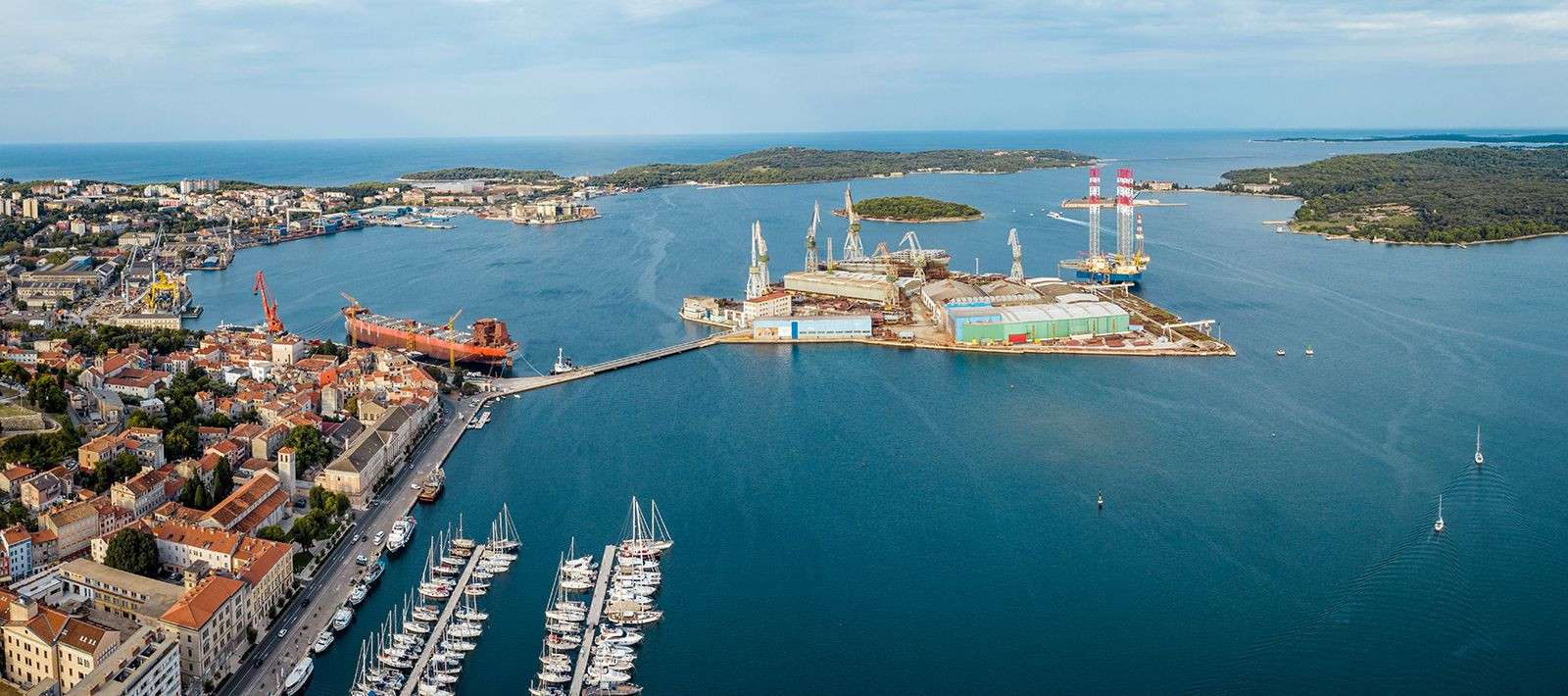 Pula Harbor Istria Peninsula Croatia Coast
Pula Harbor Istria Peninsula Croatia Coast
Biodiversity: Plant and Animal Life in Croatia
Croatia’s diverse geography fosters a rich variety of plant and animal life. The Dalmatian coast is ideal for grape and olive cultivation, while Istria is known for fir forests, and Slavonia for oak forests. Animal life ranges from coastal lizards to inland wolves and bears. Hares, foxes, boars, wildcats, and mouflons also inhabit Croatia. The Adriatic Sea teems with life, including coral reefs and underwater caves.
Conclusion: Croatia’s Unique Location and Appeal
In conclusion, “where is Croatia?” is a question answered by exploring its location in the northwestern Balkans, its diverse geographical regions – from Pannonian plains to Dinaric Alps and Adriatic coast – and its rich cultural and historical tapestry. This unique location makes Croatia a country of contrasts and beauty, attracting visitors with its history, nature, and Mediterranean charm. From its fertile inland to its stunning coastline, Croatia offers a European experience unlike any other.

